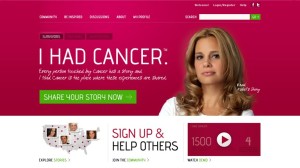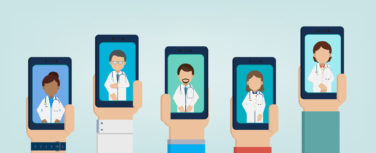Companies using social media are constantly fighting for attention, but there’s a difference between selling cupcakes and selling a new lifesaving pharmaceutical product. As Professor Damon Centola of the MIT Sloan School of Management recently told MobiHealthNews, health-focused social media shouldn’t be treated the same way—these sites have better results targeting a specific group with a repetitive message.

One example of a health-focused social network is IHadCancer.com, an online community for people fighting cancer, people in remission, and loved ones to connect. Users can create a profile to include personal information and details about their diagnosis, write journal entries, and record their treatments. Community members are able to connect with others on discussion boards, on a “Dear Cancer” page and through personal messages. The brand message is “connect with someone who understands.” Like any social network, I Had Cancer encourages users to engage and support one another, finding others who have been affected by the same disease and may have similar experiences.
When done right, creating a space designed specific to a population around a shared experience can benefit both the community and the brand. Since I Had Cancer started in 2011, it has made 35,000 connections in over 110 countries. In 2012, it won the Webby Award for the Best Community Website, and more recently, was included on Parade Magazine’s list of seven social networks that could save your life.
A health-related social network needs to be relatable, offer opportunities to engage with others in ways previously unavailable, provide an authentic space to discuss personal, emotional events and be easy to use in interface and design. Building this environment requires rich understanding about consumers’ behaviors, preferences and priorities and how a medical condition or solution fits into their daily lives. And this knowledge base will continue to grow with real-time insight from the online community.
Jeff Jarvis, digital evangelist, sums it up best: “You don’t start communities, [Mark Zuckerberg] said. Communities already exist. They’re already doing what they want to do. The question you should ask is how you can help them do that better.” By incorporating ways for people to “connect with someone who understands,” we’re on the road to building positive relationships that can ultimately drive brand preference, loyalty and growth.







